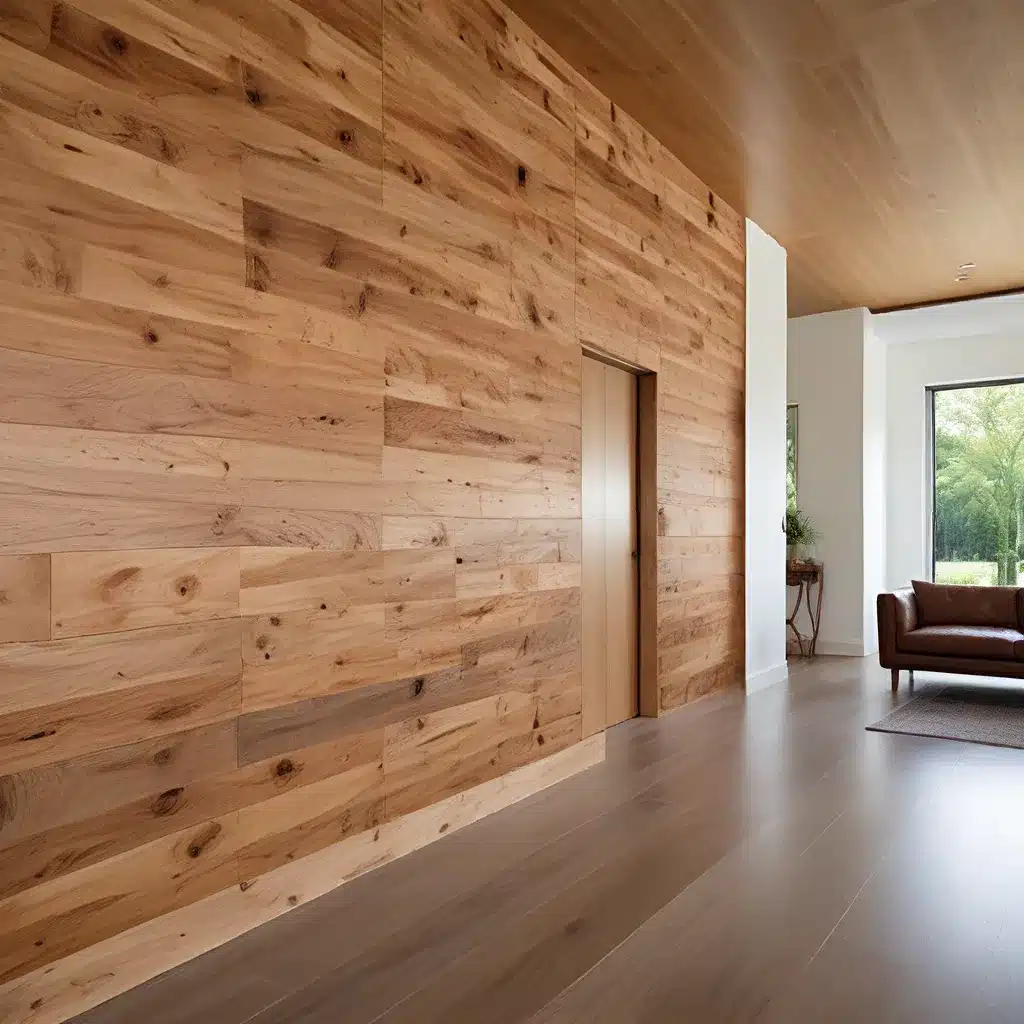
In the ever-evolving world of interior design, there’s a captivating dance happening between the timeless warmth of real wood and the sleek, minimalist aesthetics of contemporary styles. As a passionate advocate for the beauty and craftsmanship of bespoke furniture, I’ve been on a journey to uncover the secrets to seamlessly blending these two seemingly disparate elements.
The Enduring Allure of Real Wood
When I step into a room filled with the rich, natural tones of real wood, I can’t help but feel a sense of connection to the earth and a deep appreciation for the artistry of skilled furniture makers. There’s something undeniably soulful about the way the grain patterns and unique imperfections of each piece tell a story, creating a sense of depth and character that simply can’t be replicated by mass-produced, synthetic alternatives.
According to industry experts, the appeal of real wood furniture lies in its ability to add warmth, texture, and a touch of organic elegance to any space. Whether it’s the smooth, silky feel of a hand-carved dining table or the rustic charm of a reclaimed wood accent wall, real wood has a way of grounding a room and instilling a sense of timeless sophistication.
Bridging the Gap: Integrating Real Wood into Contemporary Designs
But how do we balance this reverence for natural materials with the clean, minimalist lines and sleek aesthetics that define contemporary interior styles? The key, I’ve discovered, lies in finding the right balance and strategic placement of real wood elements within an otherwise modern space.
One approach that I’ve found particularly effective is to use real wood as a counterpoint to the stark, angular forms and glossy surfaces that are hallmarks of contemporary design. For example, a solid oak coffee table with a simple, geometric silhouette can add warmth and visual interest to a living room dominated by sleek, low-profile sofas and minimalist lighting fixtures. By blending the old and the new, you create a harmonious dialogue that celebrates the unique qualities of both.
Mastering Proportion and Scale
Of course, achieving this delicate balance is no easy feat. As interior design is a multi-faceted profession that involves understanding human behavior to create functional yet beautiful spaces, the placement and scale of real wood elements within a contemporary setting is crucial.
Too much real wood can easily overwhelm a space, making it feel heavy and cluttered. Conversely, too little can leave the room feeling cold and disconnected. It’s all about finding that sweet spot where the natural warmth of wood seamlessly complements the clean lines and minimalist aesthetic of the contemporary design.
One trick I’ve learned is to use real wood in strategic, focal points within a room, such as a statement-making dining table or a striking console table in the entryway. These larger, more prominent pieces can then be balanced out with smaller, more subtle accents, like wood-framed artwork or a sculptural wooden vase.
Embracing Imperfections and Unique Character
Another key to success in this design dance is to celebrate the inherent imperfections and unique character of real wood, rather than trying to force it to conform to a perfectly uniform aesthetic.
At Unfinished Furniture, we believe that the beauty of real wood lies in its individuality. Each piece we craft is a one-of-a-kind work of art, with its own distinctive grain patterns, knots, and variations in color and texture. Rather than trying to sand away these “flaws,” we embrace them as the very essence of the material’s natural charm.
In a contemporary setting, these organic qualities can add a sense of warmth and personality that helps to soften the sleek, minimal lines of the surrounding decor. A dining table with a beautifully weathered surface, for instance, can become a stunning focal point, anchoring the space with its rustic elegance.
Thoughtful Pairing and Contrast
Of course, simply incorporating real wood into a contemporary space is not enough. The true magic happens when you thoughtfully pair and contrast the natural material with other elements in the room.
I’ve found that complementing the warmth of real wood with cool, neutral tones like gray, white, or black can create a striking visual balance. Imagine a sleek, black metal bookshelf paired with a solid oak sideboard, or a whitewashed oak coffee table flanked by modern, gray linen sofas. The interplay of textures and tones elevates the design, creating a harmonious and visually interesting space.
Alternatively, you can also use real wood to add a touch of natural contrast to an otherwise all-white or minimalist palette. A striking, live-edge dining table or a reclaimed wood accent wall can instantly inject a sense of organic rawness and depth into an otherwise pristine, contemporary setting.
Embracing the Imperfect
As I’ve delved deeper into the art of blending real wood and contemporary design, I’ve come to the realization that the key to success lies in embracing the imperfect. After all, it’s the subtle irregularities and unique characteristics of natural materials that give a space its true character and soul.
In a world that often prizes sterile perfection, the introduction of real wood with its inherent flaws and variations can be a refreshing antidote. It’s a reminder that true beauty lies in the unexpected, the imperfect, and the deeply personal.
So, as you embark on your own journey of merging modernity and real wood, I encourage you to let go of the idea of flawlessness and instead, celebrate the unique character and charm that each piece of natural material brings to the table. After all, it’s in the unexpected, the serendipitous, and the beautifully imperfect that we often find the most captivating and enduring design solutions.








